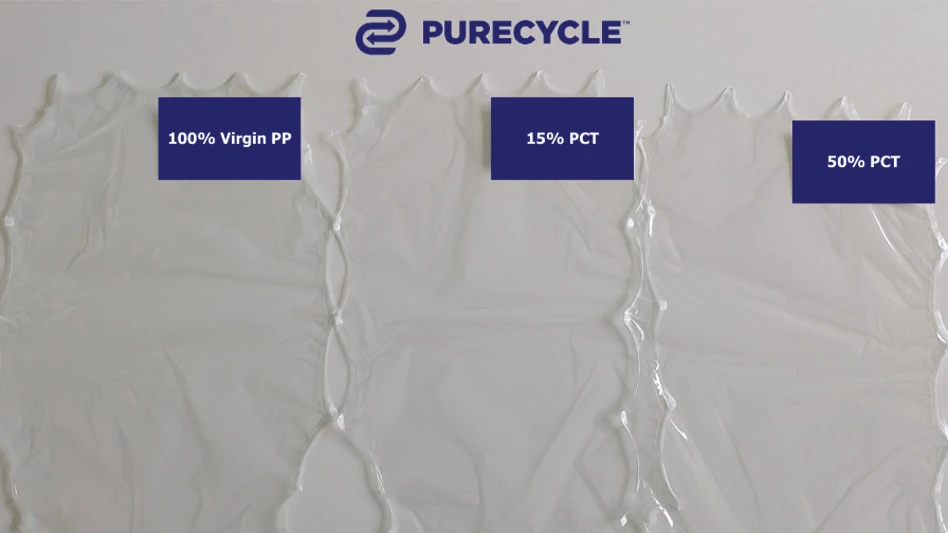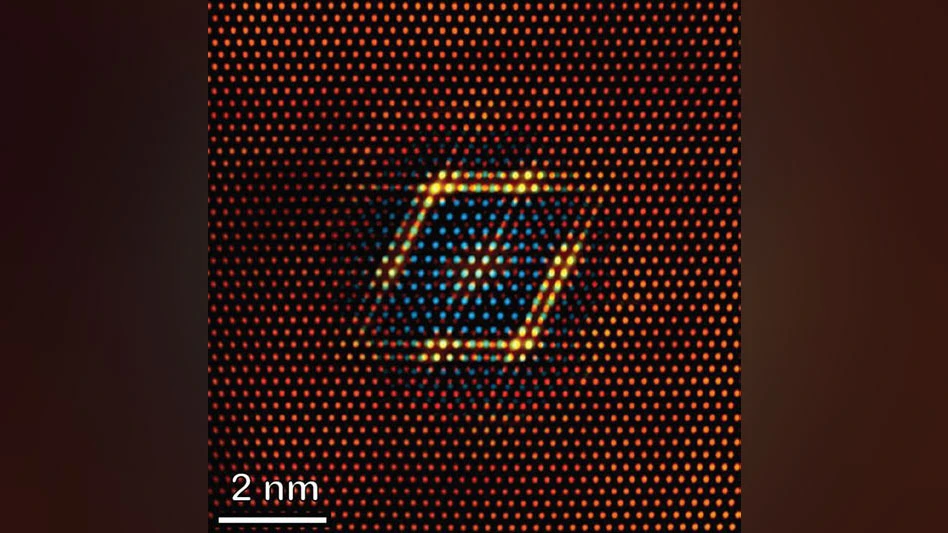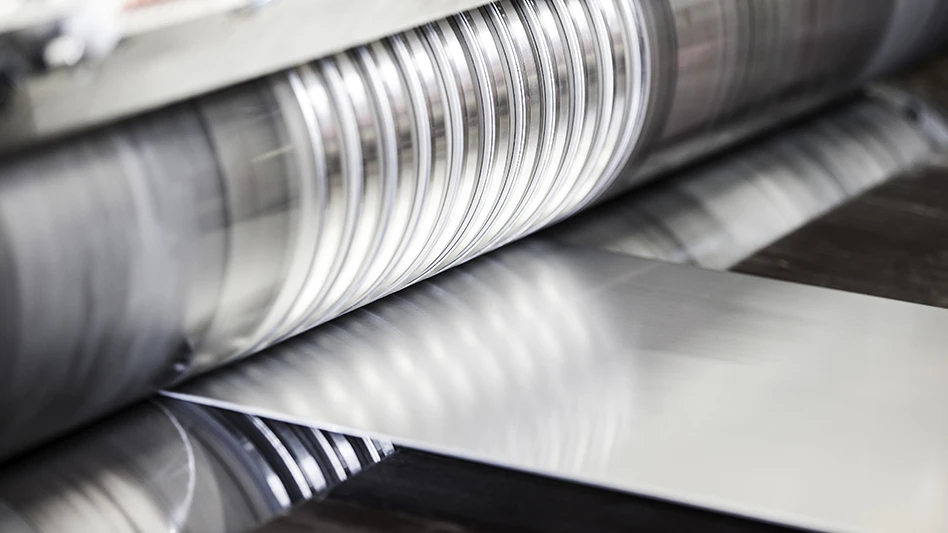
Photo courtesy of Nucor Corp.
Targets set by governments and in corporate board rooms will combine to create a price premium of $100 per ton or more for low-carbon steel in a phenomenon that should reach its peak in the 2030s, according to London-based commodities analysis and consulting firm CRU.
Four CRU staff members contributed to a mid-July presentation that portrayed the circumstances fueling investments in low-carbon steel production and forecasting how targets and penalties may create a “green premium” for steel with a smaller carbon footprint.
Juliana Guarana, an Australia-based market analyst with CRU, said different global regions are moving at varying speeds toward net zero economies. Europe has the fastest timeline toward stringent targets on carbon emissions, with some policies kicking in by 2030. That speed is slower in regions like India, with a 2070 end target, or China, with a 2060 target.
Policies in the European Union include a Carbon Border Adjustment Mechanism (CBAM) designed to impose increasingly stiff tariffs on high-carbon steel, reaching a peak in 2029.
Kostiantyn Golovko, a London-based principal associate consultant with CRU, said a ton of steel that can be made with 0.4 tons or less of accompanying Scopes 1, 2 and 3 emissions is what it proposes defines green steel.
Golovko said recycled-content steel made with electric arc furnace (EAF) technology is the most established route to making low-carbon steel, provided the electricity used is not itself highly carbon-emitting.
Using direct-reduced iron (DRI) in lieu of scrap offers another option, though the emissions-friendliest techniques involve high-grade iron ore, which Golovko said is in short supply.
The use of hydrogen energy is another low-carbon technique gaining investor attention, though CRU says it is too early to say whether such technology can be adopted cost-effectively on a wide scale.
Remaining technologies include legacy blast furnace/basic oxygen furnace (BOF) steelmaking, which is carbon-intensive.
"Existing investments in this technology, especially in Asia, where decarbonization goals are more distant, likely means global “decarbonization targets won’t be met based on the pace of change we see today,” Golovko added.
In the meantime, in places where governments and manufacturers are moving faster, Golovko said carbon surcharges have become one method of rewarding low-carbon steel but added that is different from the green premium CRU forecasts. The premium will be created in part by low-carbon steel purchasing requirements in sectors including automotive, alternative energy and appliance manufacturing.
Companies in those sectors have set emissions reduction targets and have started looking for low-carbon steel. EAF steelmakers, in particular, have begun calculating and marketing their carbon footprints, which offers “fairly easy” comparison shopping, Golovko said.
CRU characterizes the steel purchasing market as being in an adoption phase in its attitude toward green steel, a trend that will grow through the end of this decade when demand gets stronger and additional supply emerges, according to the firm.
The making of green steel needs to be incentivized, Golovko said, and a premium price for sellers would help accomplish that.
The CRU webinar contributors said a green premium will exist separately from its existing CRUsteav pricing methodology.
CRUsteav has been designed to “act as an input for decisions on determining how much to pay for low-emission steel, how viable investments are, or what future production technologies and commercial strategies to pursue,” says the consulting firm.
Adds CRU, “It provides a foundation for near-term price discussions through a transparent definition, particularly a consistent and easily understood system boundary within which emissions are included. The value is based on the carbon price traded on the EU Emissions Trading System (ETS) and the average reduction in emissions achievable by specific steel production technologies relative to the traditional [baseline] blast furnace/BOF processing route.”
Golovko and his CRU colleague Mao Yusu, a London-based analyst, predict the price premium will provide a sizable per ton margin early next decade. However, the spread will shrink by the late 2030s when more green steel projects are expected to come on stream and the supply-demand situation will gradually be easing.
Mao portrayed upside and downside price risks for makers and buyers of green steel, with market-based and CBAM penalty-based demand in Europe providing upside price pressure in the early 2030s. By later that decade, she said, government subsidies to create more low-carbon steel production will introduce downside risk and narrow the predicted premium.
In the short term, CBAM in Europe could play an observable role in whether a green steel premium becomes a reality, according to Matthew Watkins, a CRU principal analyst based in London.
“We expect that CBAM will affect the steel trade in different ways," Golovko added. "We believe it will reconfigure international trade flows and reorganize sales so low-emissions products will be directed to the European market.”
Higher carbon blast furnace-made steel, meanwhile, will go to unregulated markets until or unless they pass CBAM-like measures, which should happen in some other regions.
“If so, [CBAM] will lead to structural changes in steel costs and prices, starting in Europe,” Golovko said.
How airtight the CBAM barrier will be is a source of concern in Europe, and CRU has published a “leakage” forecast.
“At the early stage of CBAM, this will shuffle the competitiveness of material," Mao said.
Lower-emission recycled-content steel made in the United States could find homes in the EU, Mao said, and if steelmakers in the Middle East can produce low-carbon steel with nearby energy sources, that region has the potential to be a net exporter with a low-emissions profile.
CRU will host a two-day event focusing on decarbonization and the green steel market Sept. 17-18 in Stockholm.
Latest from Recycling Today
- Freight sector analysts fear container shipping chaos
- SK Tes to open ITAD facility in Ireland
- Umicore forecasts 2025 profits in line with last year
- Lautenbach Recycling names business development manager
- Sebright Products partners with German waste management equipment company
- WasteExpo transitions to biennial format for enhanced experiences
- Study highlights progress, challenges in meeting PCR goals for packaging
- Washington legislature passes EPR bill





